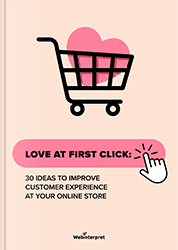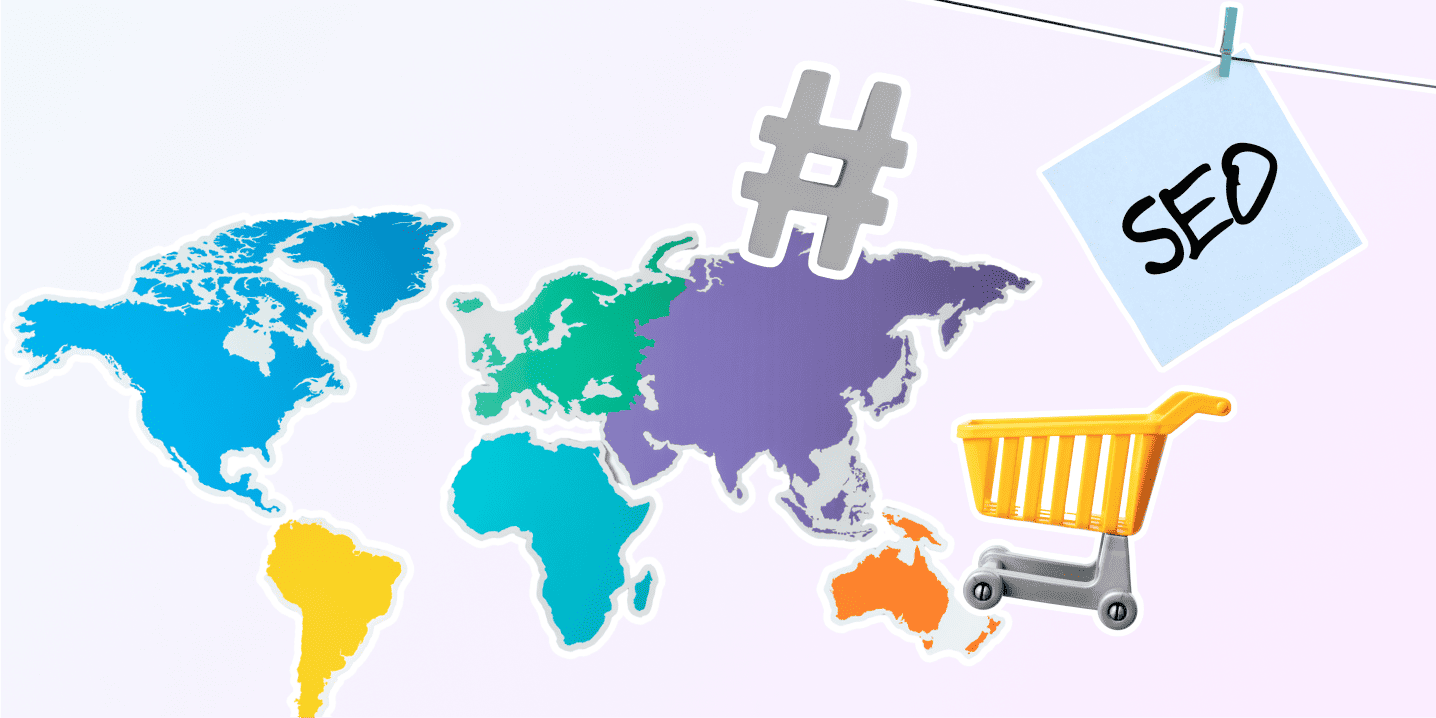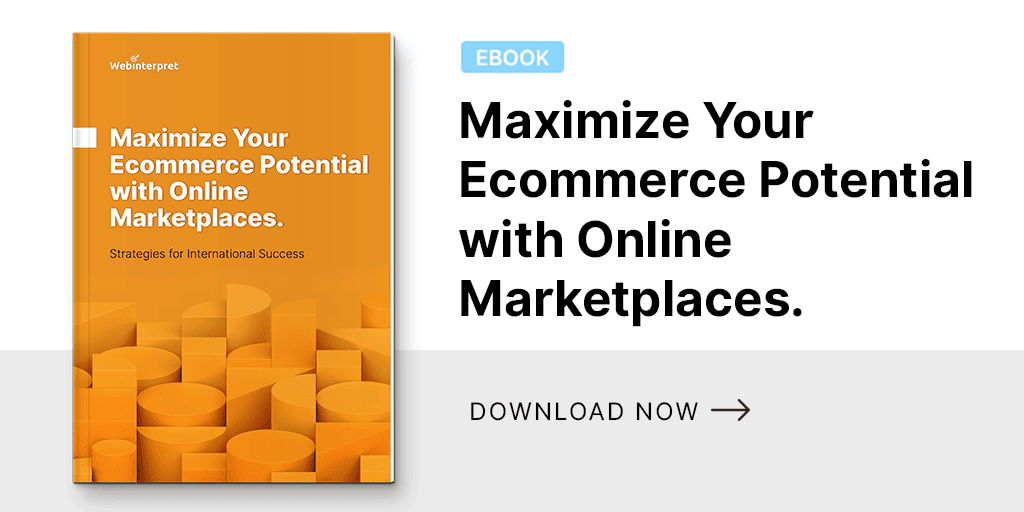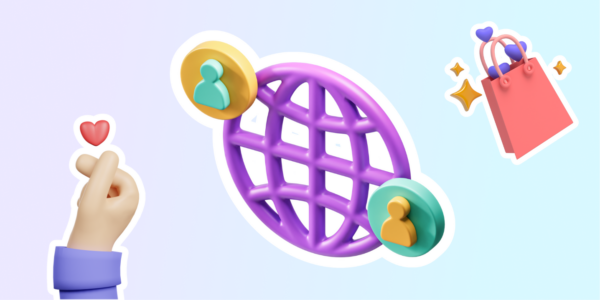6 proven tips to get noticed on international marketplaces
Selling internationally is one of the quickest and most effective ways to scale up your online business.
But how to make sure you get noticed by international customers?
Competition is huge. Only a well-thought-out action plan can help you beat your competitors and get discovered globally first.
This article contains carefully chosen recommendations. Read further to:
- Learn how to make your online business stand out from the competition
- Discover the benefits of automation
- Recognize the power of customer experience
- Understand the importance of cultural differences in cross-border customer experience
#1 Choose the right marketplace to find the right customers
To effectively navigate the intricacies of cross-border trade, it is crucial to have a solid understanding of the marketplace landscape. Each platform has its unique characteristics, rules, and customer base, which will also differ depending on the country.
Types of online marketplaces:
- Vertical marketplaces that specialize in only one kind of product category, e.g. clothing and accessories. For example, TrueFacet.com only sells jewelry and related products.
- Horizontal marketplaces that offer products of many different types, but all sharing a characteristic, e.g. Dote.com enables women to shop at multiple retailers simultaneously by viewing all products from all retailers at the same time.Global marketplaces that sell everything, e.g. eBay and Amazon.
The question remains: what are the best platforms to sell online?
By researching various marketplaces, you can identify the ones that align with your business goals and target audience. Which will automatically get you a head start.
Selling on multiple marketplaces can also help you diversify your sales channels, providing you with more opportunities and options in the event of adversities.
Read our comprehensive overview of top online marketplaces. Consider factors such as popularity, competition, fees, and seller support when choosing the right one for your products.
#2 Increase your marketplace discoverability
The purchase funnel framework models the journey of a buyer toward the purchase of a good or service. One of the key aspects of this framework is the concept of “visibility”: how likely a particular product is to be found by a potential buyer.
Marketplaces are the ultimate shopping destination. But they have also become the beginning of the customer’s buying journey.
Many consumers don’t start with Google or retail websites when they want to purchase products but with marketplaces. In fact: 6 out of 10 product searches now start on Amazon, not Google.
This is why you should work on increasing your discoverability on marketplaces by optimizing your marketplace product listings. It is essential to help you land and stay on the first page of search results.
What are some factors contributing to making your product portfolio visible? In contrast to other factors (e.g. price) that mainly impact the final decision of the buyer, product visibility is affected by the particularities of the search engine and the interface implemented by the marketplace.
#3 Do keyword research
Conduct keyword research to identify relevant search terms that customers look for on marketplaces.
You can use various third-party keyword research tools. but you can also start the process by:
- Typing in a term into the marketplace’s search bar and seeing what suggestions or long-tail keywords come up
- Browsing your competitor listings and analyzing what types of terms are used there
- Checking similar products section and popular there.
Ecommerce tip
Always get the important keywords first. Keyword order and keyword choice in your title can dramatically influence product sales and rank.
#4 Optimize your product listings
Make sure your product descriptions are accurate and clear. Structure and format your text to be as user-friendly as possible. Highlight the key features and benefits of your product. Do not forget to add spacing and paragraphs, emphasize important information by using bold text, and use bullet points for key product features. Understanding what you offer will smooth out your customers’ decision-making process.
Crafting compelling and unique product descriptions is important, but it’s not everything. You already know that Search Engine Optimization (SEO) plays a vital role in getting noticed on international marketplaces. Proper listing optimization means more sales.
Once you have researched and identified relevant keywords, incorporate them naturally into your product titles and descriptions to improve search visibility and relevance. Additionally, optimize your images with alt tags and captions for better discoverability too.
However, optimizing product listings can be tricky, especially if you sell internationally.
[Download the Ultimate Ecommerce Icon Pack NOW]
#5 Localize your product offers
To grow your sales internationally, you need a solid product localization strategy. This goes beyond the mere listing translation.
Product localization, common in ecommerce, involves adapting or modifying a product or service for a given language, culture or region. Product localization strategy involves much more than translation.
Ecommerce localization is a term that describes all aspects of preparing your marketplace listings / online store for growing international sales.
The objective is to provide international buyers with an online shopping experience that is indistinguishable from their normal native experience. This way, sellers can compete on a level playing field with local competitors. And providing a localized shopping experience will enhance your credibility and make local customers more likely to choose your products.
Ecommerce localization is also about currency and size conversion, communication with foreign buyers, legal restrictions, marketplace SEO or international shipping. But to do all this manually would involve a lot of hassle.
Luckily, today product localization processes can be fully automated. However, it’s not about any automation, but one that takes place in the ecommerce context.
How to localize your product offers on international markets so you can compete on a level playing field with local sellers? Good localization has to be:
- Country / culture specific: different countries, different markets. When in Germany, sell as Germans sell: in their local language, currency, using their favorite payment methods, etc.
- Merchant specific: merchants, especially bigger ones, may describe and market their products in their own ways, sell their own brands, use specific brand names, color descriptions, conversion tables or use a special writing style and industry vernacular.
- Platform / channel specific: different ecommerce platforms (eBay, Amazon, Walmart, etc.), different rules. Each platform has its own content structure, text formatting and eligibility rules. Proper category and filter mapping must be ensured.
Download our “Definitive guide to ecommerce translation and localization” for free for more useful tips on that topic.
#6 Invest in ads
Why should your customer navigate through endless pages of offers instead of clicking on the best one first? Imagine this. A buyer lands on your product detail page, ready to purchase your product… but suddenly they see a competitor’s sponsored ad. You lose the sale at the point of conversion due to your competitor’s cheaper price.
Make your clients’ and your own life easier and invest in promoting your listings.
Utilize paid advertising options provided by the platforms to reach a wider audience. Sponsored ads are the quickest way to boost your product listings or establish new ones. They can boost individual listings to the top of search results pages, boost traffic to stores or show listings to interested customers that have navigated away from a marketplace.
And they don’t necessarily need to be expensive, especially when you treat them as an investment – it will return fast.
Bonus tip: Don’t forget about the customer experience!
Many online businesses mistakenly think that customer experience is restricted to brick-and-mortar stores. It exists in the digital world too! You should make it part of your strategy if you want to thrive on marketplaces in the long-term perspective.
Working on your visibility will allow you to increase sales in the short term but paying attention to customer experience will foster brand loyalty in the long term.
When it comes to cross-border customers, it is essential to understand that customer experiences can differ significantly across cultures. Various cultural values and norms can influence how customers perceive and interact with your brand. To effectively navigate these cultural differences, it is essential to do research on your target markets by conducting surveys to better understand customer needs and preferences.
Bad customer experiences might cost you, quite literally. Not only does it directly affects your sales, it greatly harms your reputation. One in three consumers say they would walk away from a brand after a bad experience.
According to research by Temkin Group,
86% of buyers who received a great customer experience were likely to repurchase from the same company.
The loyal, returning customer should hold a special place in your company’s heart. According to a 2021 study by Invesp, the cost of acquiring a new customer can be up to five times higher than the cost of retaining an existing one. It is important for ecommerce businesses to focus on customer retention strategies in order to increase profitability and sales.
Conclusion: how can you get more customers on international marketplaces?
Selling internationally is one of the quickest and most effective ways to scale up your online business. And international marketplaces are a competitive scene.
However, with their multi-million active user base and unlimited sales opportunities, it is a scene you definitely want to be a part of.
But how can you ensure that you stand out and get noticed by international customers? In a highly competitive global marketplace, having a well-thought-out action plan is essential to beat your competitors.
By following our proven tips, you can increase your chances of getting noticed and achieving global recognition. Remember to:
- thoroughly research each marketplace,
- optimize your product listings,
- localize your content,
- and implement effective advertising strategies.
Stay committed, adapt to the preferences of your target markets, and watch your international business thrive.
About Webinterpret
Webinterpret enables Amazon and other marketplace sellers to sell more effectively in international markets through localized versions of their product listings. For more information, feel free to contact our cross border trade experts.

Discover 30 ideas to improve ecommerce customer experience
Sources
Related Posts:
Ecommerce Newsletter
By clicking the “Subscribe now” button, you agree to receive our monthly e-mail newsletter and regular marketing and commercial communications by email from Webinterpret regarding marketing trends and our digital marketing services. You confirm that you have read and agreed to Webinterpret’s Terms of Service and Privacy Policy.





